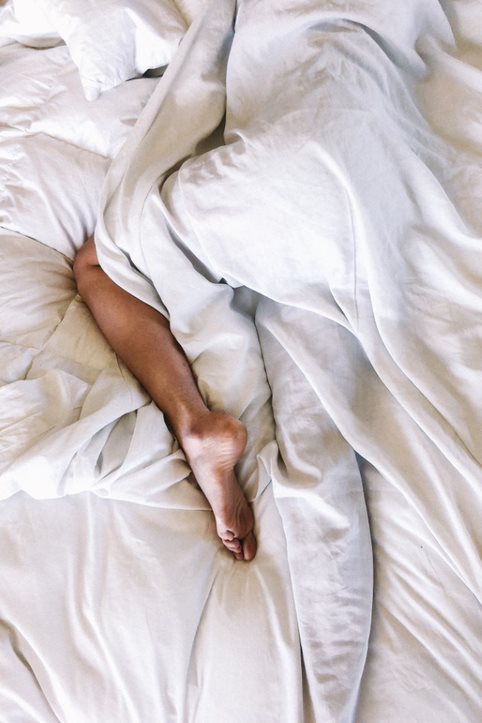
What Causes PMS and Solutions to Your Symptoms
If you talk to your friends who experience monthly bleeds, you will likely find that many of them report physical and emotional changes leading up to their period. Around 50% of women of reproductive age experience PMS; with 5% having a severe form of PMS called premenstrual dysphoric disorder (PMDD).
Premenstrual syndrome (PMS) is classified as reoccurring luteal phase symptoms (between ovulation and your period) that tend to subside within hours of a period arriving.
Some mild PMS symptoms are normal as your hormones fluctuate throughout the month, as they’re supposed to. These are normal, natural, cyclical, fluctuations that you will likely feel the effects of. However, debilitating PMS is not normal. Common yes, but normal, no!
Thankfully, there are many supportive options I’ll cover in this blog that can assist your PMS symptoms. Because PMS refers to a larger and varying set of symptoms. and not ‘one thing’, PMS can refer to any of the below symptoms you experience in the 2 weeks before your period.
These symptoms are categorised into:
- Psychological – Irritability, anger, depression, anxiety, mood swings, crying and tearfulness
- Physical – Headaches, breast pain, tenderness and swelling, period pain and cramping, back pain, bloating, fluid retention, fatigue, insomnia, food cravings, and weakness
PMS as a diagnosis has then been classified into 4 specific types:
1. PMS-A (anxiety)
- Signs of nervous tension, irritability, anxiety, mood swings
2. PMS-D (depression)
- Low mood, avoiding social situations, crying, anger, forgetfulness, insomnia, inability to concentrate
3. PMS-H (hyper-hydration/fluid retention)
- Breast pain and tenderness, lower body swelling, bloating, abdominal discomfort
4. PMS-C (cravings)
- Food cravings, increase in appetite, fatigue, headaches
Knowing which type of PMS you have will help you to determine which treatment options are best for you.
What causes PMS?
Firstly, your hormones nor yourself are to blame for PMS! Your hormones are beneficial, necessary, and are made to support you. Whether you have elevated or low levels of certain hormones will contribute to PMS symptoms, but it is not the problem of the hormones themselves. The levels, ratios, and timings of your hormonal fluctuations matter.
There is no one singular cause for the symptoms of PMS, however likely causes include:
- Hormonal imbalances – excess oestrogen, low progesterone, elevated prolactin (hyperprolactinaemia)
- Inflammation – prostaglandin and cytokine imbalances, underlying medical condition, insulin resistance
- HPA axis dysfunction – chronic stress leading to the abnormal regulation of cortisol
- Nutrient deficiencies – including magnesium, vitamin B6, calcium, and iodine
- Excess levels of aldosterone or antidiuretic hormone (ADH) leading to sodium and water retention
- Abnormal neurotransmitter response – deficient serotonin output, decreased GABA
Now for the good part – lets troubleshoot solutions to your PMS symptoms!
Symptom 1; Pain and cramping
If strong period pain is a symptom for you every month, I encourage you to read this blog and adopt the relevant treatment options. The section on what hormones to test and at what time of your cycle, may be relevant for you.
For pre-menstrual and day 1 cramping I suggest trying 1 – 2 of the following options:
- Magnesium supplementation, 300 – 800mg in split doses
- Turmeric, which has the added benefit of lightening heavy periods
- Fish oil, 2 – 3g of omega 3 daily
- Calcium citrate 1,200 daily
- Zinc 30 – 50mg daily after food
- If you have low luteal phase progesterone levels, Vitex is an option to consider
- Herbal analgesics (natures pain killers!) include Jamaican dogwood, California poppy, Corydalis, and Willow bark. Speak to your Naturopath to see if these may be appropriate for you
- Reconsider/reduce your caffeine intake
A note on histamine:
If you experience period pain, breast pain, headaches or migraines, and mood symptoms such as anxiety and irritability, you may be experiencing the effects of high histamine levels. Oestrogen levels can drive histamine intolerance symptoms – so if your symptoms occur before ovulation and before your period, this may be relevant to you.
Histamine intolerance is a topic that requires a whole blog in itself, however start with looking into a low-histamine diet and consider a histamine-reducing supplement. Examples include quercetin, Vitamin C, B6, and SAMe.
A helpful tip – if your symptoms respond well to taking anti-histamines, this is a good indication that histamine levels may be contributing to your PMS symptoms.
Symptom 2; Mood symptoms
Including anxiety, depression, irritability, and mood swings.
I suggest testing your hormones first before diving into any treatment options below. Ideally you want to test:
- Oestrogen and prolactin, on day 2 of your period
- Progesterone, 7 days post-ovulation
For anxiety consider:
- Magnesium supplementation, 300 – 800mg in split doses
- B6, 40 – 150mg daily in split doses
- Taurine, 1 – 3g daily
- Zinc 30-50mg daily
- Vitex/Chaste tree
- Anxiolytic herbs include Passionflower, Lemon balm, Skullcap and Zizyphus. These herbs can also help with anxiety-related sleep troubles
- Supplement with the calming neurotransmitter GABA
- Consider the role of caffeine – the link between intake and anxiety is well-established
If you are taking anti-depressants or are on the pill, please consult with your practitioner before using any of the following treatments as they may interfere with the efficacy of your medication.
For depression and low moods I suggest the above as well as:
- Fish oil, 2 – 3g of omega 3 daily
- Tryptophan/5-HTP
- SAMe (S-adenosylmethoionine), 100 – 400mg daily
- St John’s Wort
- Turmeric
- Saffron
Symptom 3; Headaches and migraines
PMS migraines are caused by the severe drop in oestrogen that occurs before your period arrives. Studies show that iron deficiency and low levels of melatonin can contribute to cyclical migraines also. Consider:
- Magnesium supplementation, 300 – 800mg in split doses
- Vitamin B2/Riboflavin. 200mg taken twice daily
- Increasing your iron intake or supplementing if levels are low
- Melatonin, taken in the luteal phase
- Feverfew, 100 – 130mg extract
- If progesterone levels are low, support your levels with Vitex and B6
- Bioidentical progesterone, prescribed by your GP
Symptom 4; Breast pain
Firstly test your prolactin and urinary iodine levels (first void of the morning, fasted). Low or high levels of either of these can cause breast symptoms. You may like to consider:
- Iodine supplementation, dose will depend on your iodine levels and thyroid health
- Vitex, note that this can take up to 3 months to relieve symptoms
- Be mindful of your caffeine intake as excess caffeine has been linked to breast pain
Symptom 5; Fluid retention/Bloating
Feeling swollen, fluid-y, and overly bloated leading up to your period is likely to do with excess levels of oestrogen, poor oestrogen clearance, and/or low progesterone levels. See points 1 and 2 in this blog on how to test and treat excess oestrogen and low progesterone.
Symptom 6; Fatigue
Support for premenstrual fatigue will depend on the cause of why it is occurring. Common reasons and treatment options include:
- Insomnia in the luteal phase:
o Both oestrogen and progesterone have beneficial effects on sleep. Therefore as levels of these hormones drop low towards your period, you lose these protective benefits on sleep o Try magnesium, 300 – 600mg in split doses o If progesterone levels are low, support your levels with Vitex and B6 o Supplement with the calming neurotransmitter GABA, 100 – 600mg nightly o Melatonin, taken in the luteal phase o Rest more during the day
- HPA dysregulation:
o Due to the loss of progesterone, which can make you feel adrenally fatigued o This will make you more stressed, anxious, and irritable
o Try a complex that includes magnesium, taurine and B6
o Try herbal adaptogen support. Withania, Rhodiola, Schisandra, and Siberian ginseng are all nourishing options
- Iron deficiency:
o Common in those with heavy periods, low meat intake, or digestive issues. If your iron is already low, having your period means your levels will drop further each month
o Increase your iron intake AND absorption
o Supplement with iron AND co-factors
Symptom 7; Breakouts
Cyclical acne tends to flare just before and during your period, and starts to settle down towards the end of your bleed. It fluctuates as your hormones fluctuate. If this is your pattern, the below suggestions may benefit you. If you have acne all cycle round, with no obvious pattern – you need to look deeper for the underlying cause of your acne. Read this blog on how to troubleshoot your acne.
For cyclical breakouts I recommend:
- Zinc 30-50mg daily
- Vitex/Chaste tree
- Read this blog on key nutrients for skin health
I hope you now have some clear direction on what may be contributing to your PMS symptoms and what nutritional and herbal medicine options you can use to support your health.
Part 2 of this blog can be found here which covers simple and accessible dietary and lifestyle options to support your PMS symptoms.
Please leave your questions below, or feel free to reach out if you are looking for one-on-one support with your PMS or other hormonal condition.
You can book in a Base Chat or Initial Session with me here.
Jaclyn is a qualified Naturopath with a focus on hormonal complaints, reproductive and fertility care, skin, and adrenal health.
Author
Jaclyn CaveBHSc (Nat), BComm (Soc)
Learn more about Jaclyn here.
Book a session with Jaclyn here.
References:
https://pubmed.ncbi.nlm.nih.gov/31928364/
https://www.ncbi.nlm.nih.gov/pmc/articles/PMC3208934/
https://pubmed.ncbi.nlm.nih.gov/11129515/
https://www.ncbi.nlm.nih.gov/pmc/articles/PMC7527439/
https://www.sciencedirect.com/science/article/pii/S1028455909602710
https://pubmed.ncbi.nlm.nih.gov/23642943/
https://www.ncbi.nlm.nih.gov/pmc/articles/PMC3033240/
https://www.ncbi.nlm.nih.gov/pmc/articles/PMC4540034/https://www.eatforhealth.gov.au/food-essentials/how-much-do-we-need-each-day/serve-sizes
https://pubmed.ncbi.nlm.nih.gov/31987230/





